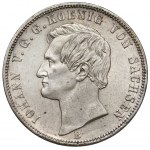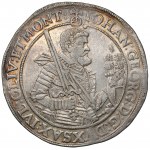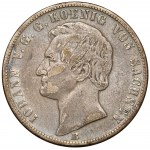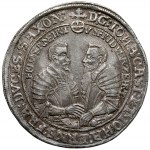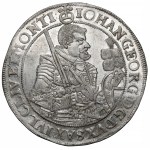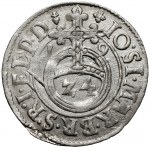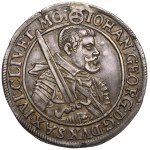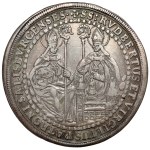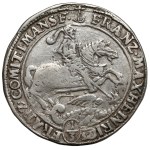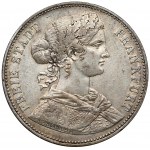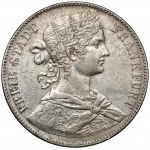Having a Sobieski thaler in the collection is ennobling, since the entire reign of Lev Lehistan left us with only two such issues.
The first was crown thalers without a date, the minting of which is associated with the Vienna Victory. Extremely rare today, as evidenced by our 20th auction(sold for 442,500 zlotys). The second took place in 1685.
And it is the later print from the original stamps of this second issue that the present thaler is. It was made on a disc of pure silver, with a lower weight. It is described in old catalogs as a 19th-century mintage, although the lack of traces of long "ageing" of the stamps may suggest an earlier period. Perhaps even from the period of the development of Danzig's collecting circles during the reign of King Augustus III, when the mint was minting its products for them in gold and pure silver.
Beautiful. Mint mirror all over both sides. On the obverse with rubbing. On the reverse, there is a scrape mark in the place of the deficient letter N (which can be compared with the piece illustrated in "A Thousand Years of Polish Coinage" on page 295). Preserved beautiful detail.
A great rarity - the second piece known to us after the piece by Tadeusz Kalkowski.
Ex. 47 Dieter Gorny auction (Munich 1989).
King John's Gdansk thalers are a beautiful buckle closing the long period of minting a thaler coin by the main trading city of the Republic. The work of an outstanding medalist, a master of his era, Jan Höhn the younger. At the time, he most likely prepared one pair of stamps, which was used to mint a small batch of thalers, as indicated by their sparse quotations today. In practice, this is the only attainable coarse coin of Jan III Sobieski.







